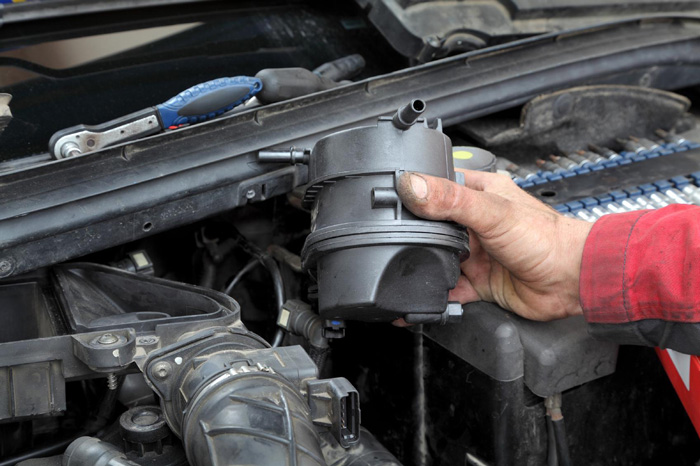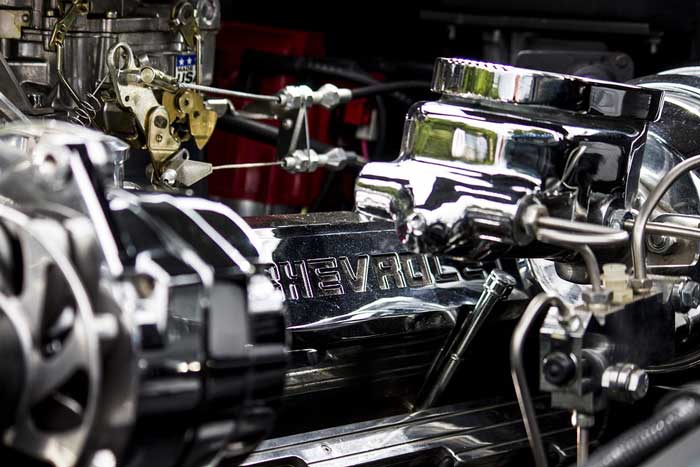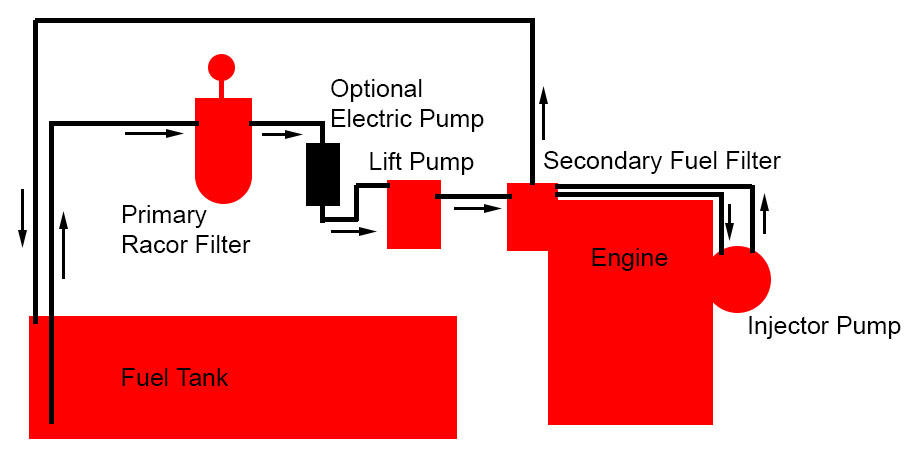How Does A Fuel Filter Work?
by Chris Lewis.
Engines are a work of beauty, especially in modern-day locomotives. For them to run smoothly and effectively, they require clean fuels. External components can be limiting factors to your engine's functionality. Common types of foreign material that may get into the fuel are dust and water particles.
That is possible during the production process and transportation of the fuel. Water particles, for example, can lead to corrosion of the fuel system. Other particles and debris expose your engine to the risks of wearing out. For that reason, you need high-quality filters to trap such particles.
Contents
Fuel Filters

A fuel filter is one example of the essentials that you need to maintain a "healthy" engine and car. The fuel filter cleans the fuel that runs to the engine by filtering off contaminated gasoline and dishing out a clean stream of gas. However, after some time, the fuel filter gets saturated by the filtered out particles.
As such, it occasionally needs replacement to ensure the efficiency of the filtration process upholds. To get a clear picture of the vital role of this piece of the rig, we need to understand how exactly it runs its business. Let's take a detailed tour of its functionality.
How Does Fuel Get To The Fuel Filter?

The best way to get the answer to this question is by tracing back to the start of the fuel system flow. The fuel filter is only but a part of an interconnected system that foresees the flow of fuel from the gas tank to the engine.
When you take your car to the petrol station for a refill, the gasoline deposition occurs at the gas tank. The gas tank acts as a temporary holder of the fuel when the car is stationary. However, when the engine needs fuel, the gasoline in the gas tank gets pumped out.
A fuel pump is responsible for that process. The pressure from the pump pushes the gasoline straight into the fuel lines. The fuel lines are responsible for creating a flow channel from the tank to the engine via the filter.
Components of a fuel filter
Fuel filter consists of a cylindrical filter element housed inside a metal casing or sometimes known as a metal shell. There is a space left between the filter element and the housing. The reason behind that is to allow the fuel to flow in and out of the filter before and after filtration.
The buildup material for the filter element consists of high-quality polyester and cellulose fibers. The constitution of these materials makes the filter element sturdy and durable to withstand the flow of fuels.
Additionally, the medium is in fold form that looks like pleats. The pleated design provides a big surface area that increases its absorbability power.
Fuel flow in the filter

The fuel gets into the filter through the fuel inlet opening. It then trickles down the annular space between the element and the casing. The space between the filter component and the housing is usually small; therefore, the fuel has to go through the filter element.
Through the filtration process, tiny particles in the fuel like dirt and metal debris remain on the surface of the pleats. Water, on the other hand, settles at the bottom of the metal casing. Water is denser than fuel, which explains why it settles at the bottom.
A valve sits at the bottom of the metal casing. The water that settles at the bottom gets drained off by opening the valve. The engine depends on the fuel to lubricate its moving parts. So if accidentally water mixes up with fuel and happens to reach the engine parts, it will result in overheating and wearing out of engine parts because it doesn't achieve optimum lubrication.
After the whole process is complete, the fuel outlet takes out the clean gasoline from the filter. The process that falls next is mixing the clean fuel with air to get an air-fuel mixture at the injector chamber.
For the likes of the diesel engine fuel system, the fuel undergoes two stages of filtration. That is, through the primary filter and the secondary filter. As such, the chances of contaminants harboring in the fuel are close to zero. Let's break down the diesel fuel filtration system.
Diesel Filtration System
It is composed of two filters, as mentioned earlier. The primary filter lies between the gas tank and the fuel pump. Fuel flows from the fuel tank to this filter under the force of gravity. The primary filter has the capability of trapping particles of up to 30 microns.
After the fuel goes through the primary filter, the removal of coarse particles takes place. Therefore, the diesel still contains finer impurities. That is where the secondary filter comes in. The fuel pump and the injection pump sandwiches the secondary pump.
From the primary filter, fuel gets pumped by the fuel lift pump to the secondary filter. The filter has a capability of trapping impurities of up to 10 microns in size. The filter gives out clean diesel, which now goes to the injector via the injector pump.
Conclusion
After going through this detailed review on fuel filters, you now understand why it is crucial to have a quality one in your car. The fuel filter ensures a clean run of your fuel stream in the fuel system and the engine.
Selecting the right type of filter is part of the process too. Not all filters are similar to each other. There are varying differences when it comes to features like threading techniques. Having the wrong filter for your car can open the possibilities of unfiltered fuel leaking into the system.
When that happens, you know what's coming next for your engine parts. To get it right, you can always refer to the manufacturer’s manual or the parts catalog. Additionally, consulting your manufacturers' firm is still another option in case you are not sure.
Remember, it is way cheaper replacing the tiny filters than the whole engine, which may wear out due to neglect. Please make a point of not only having a quality fuel filter but also changing it from time to time when saturated.
 |
 |
 |
 |

About Chris Lewis.
Chris Lewis is a passionate individual with a deep affinity for the world of automobiles. From a tender age, his fascination with cars was nurtured by his father, a seasoned mechanic based in the vibrant city of San Francisco. Growing up under the watchful guidance of his skilled father, Chris developed an early aptitude for all things automotive.
Thoughts on "How Does A Fuel Filter Work?"
 |
 |
 |
 |
Get FREE Filters now. Or latest free tools from our best collections.
Disable Ad block to get all the secrets. Once done, hit any button below
 |
 |
 |
 |